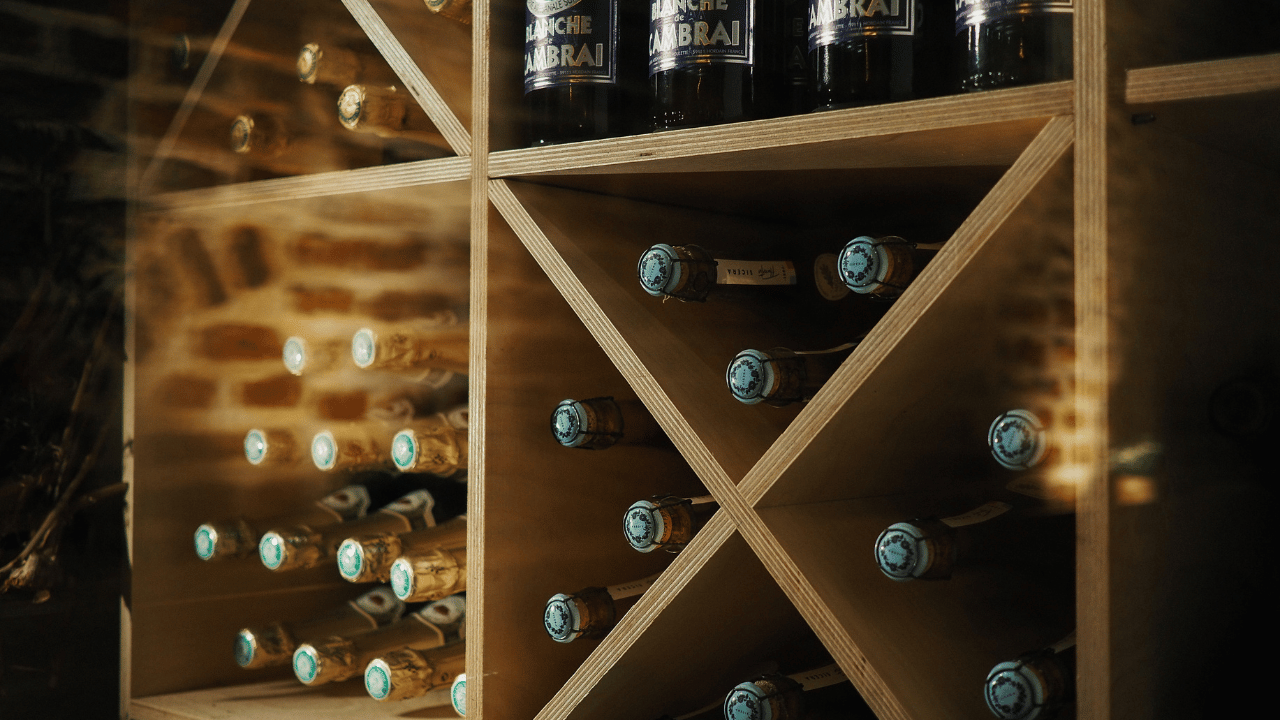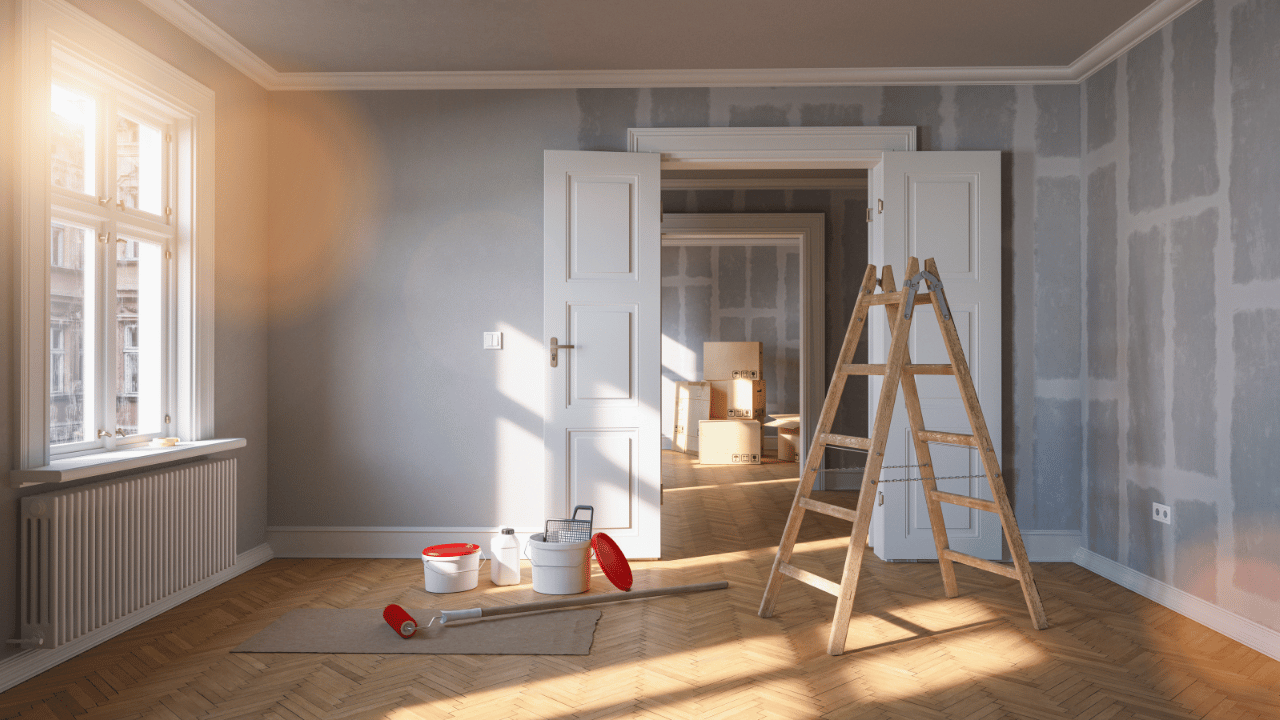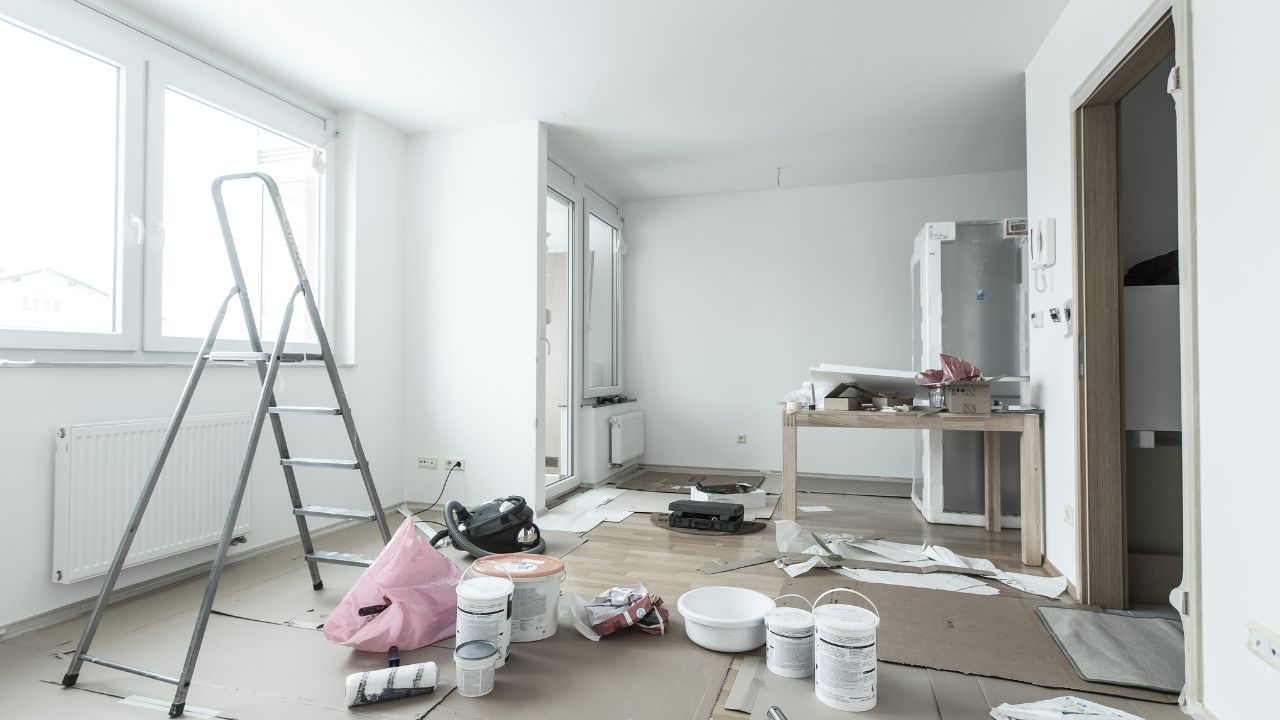Last Updated on September 20, 2023 by Pro Handyman Australia – Editorial Team
Basements often get branded as the dim, forgotten spaces of our homes, typically reserved for storage or occasional workshops. But what if that neglected space could undergo a transformation, turning from the unnoticed to the unforgettable? Imagine crafting an inviting retreat, a lively entertainment hub, or even a cozy guest suite right below your feet. If you’re pondering the possibilities your basement holds, you’re in for a treat. This blog will walk you through 15 inventive ideas to revitalize your basement, turning it from mere storage to a vibrant living space. Let’s venture downstairs and unlock the hidden potential!
15 Creative Ideas to Turn a Basement into a Living Space

Often overlooked, the basement presents a canvas brimming with potential. Instead of relegating it to mere storage or an infrequently used workshop, with a dash of creativity, it can be transformed into the most beloved spot in your home. Whether you’re dealing with a sprawling space or a compact corner, here are 15 inventive ideas to breathe life into your basement:
1. Home Theater
Nothing says luxury like a personal movie theater. Start with plush seating, either tiered or spread out, depending on the space. A high-definition projector, a pull-down screen, or even a dedicated LED TV can serve as your display. Enhance the cinematic experience with surround sound speakers, blackout curtains, and perhaps a popcorn machine for that authentic theater feel.
2. Personal Library
For the bibliophiles, imagine a haven with floor-to-ceiling bookshelves filled with your favorite reads. Add a comfortable armchair, warm lighting, and perhaps a ladder to reach those top shelves. A quiet, underground library is the dream of many a book lover.
3. Basement Bar or Pub
If you fancy a space to relax and entertain, convert your basement into a chic bar. Think wooden counters, stylish bar stools, pendant lighting, and wall shelves displaying a variety of beverages. An added bonus? A game corner with darts or a pool table.
4. Fitness Studio

Who said you need to leave home for a workout? Durable rubber flooring, a mirrored wall, and your choice of gym equipment can transform your basement into a fitness oasis. Yoga, weights, or even a dance studio—the choice is yours.
5. Playroom for Kids
Give your children a dedicated play space with soft carpets, vibrant murals, and plenty of toy storage. You can even add a craft corner or a mini-stage for those future performers.
6. Music Studio
For the musically inclined, a basement can be the perfect spot for a jam session. Soundproof walls, quality acoustics, and a mix of instruments can make your basement the neighborhood hotspot for music enthusiasts.
7. Art Studio
Allow your creativity to flourish in a dedicated art space. Easels, storage for art supplies, and even a skylight, if possible, for that natural lighting can inspire masterpieces.
8. Guest Suite
Offer your guests a private retreat. A cozy bed, ambient lighting, a seating area, and if space allows, an en-suite bathroom can make your guests feel right at home.
9. Home Office

With remote work on the rise, a quiet, dedicated workspace can be invaluable. A sturdy desk, ergonomic chair, and some greenery can enhance productivity and comfort.
10. Game Room
From video games to board games, dedicating a space for recreational activities can make your home the go-to spot for gatherings. Pinball machines, foosball, or even an old-school arcade game can elevate the fun.
11. Wine Cellar
For wine enthusiasts, the basement’s naturally cool environment is ideal. Wooden racks, controlled lighting, and a tasting table can turn your basement into a connoisseur’s paradise.

12. Spa Retreat
Bring tranquility home with a spa-like setting. Think of a sauna, a massage area, soft lighting, and perhaps a small indoor fountain for that soothing ambiance.
13. DIY Workshop
For those who love getting hands-on, a basement can house all your tools and projects. Workbenches, tool racks, and proper ventilation can make DIY tasks a breeze.
14. Meditation Zone
A serene corner with minimalistic decor, floor cushions, calming hues, and perhaps a small zen garden can become your sanctuary for mindfulness and meditation.
15. Indoor Garden
If you lack outdoor space but have a green thumb, turn your basement into a lush garden. With the right lighting and hydroponic systems, you can grow a variety of plants, herbs, and even veggies year-round.
Tips for Transforming Your Basement into a Welcoming Space

The Power of Comfortable Seating and Ambiance Basements can serve as excellent spaces for gatherings with friends and family. To ensure everyone feels at ease, it’s essential to provide an ample amount of comfortable seating. Pair this with a bright and cheery ambiance, and your basement will become a favored spot rather than a space reminiscent of a gloomy cellar. Adding a designated area for meals or snacks can further enhance the room’s appeal.
Choosing the Right Decor for Spaces Without Windows In the absence of windows, the color scheme and decor play a pivotal role in setting the tone of the space. Light paint shades, complemented by similarly toned tiles or floor coverings, can instantly make a room feel more inviting. Darker hues, on the other hand, might create a more confined feel, especially in spaces without natural light.
Incorporate Features Loved by All Family Members To make the basement a beloved spot for all members of the household, it’s crucial to introduce elements that cater to everyone’s interests. This might include a television for movie nights, a dedicated play zone for kids, or even a card table that can serve as the hub for family game nights. The key is to infuse the space with elements that resonate with everyone, increasing the likelihood of it being frequently used and enjoyed.
Unlocking the Potential of Your Basement
Diverse Functional Possibilities Your basement offers a plethora of potential uses. It can effortlessly transform into a vibrant playroom for children, a fully-equipped gym, a cozy bedroom for a live-in nanny, a welcoming guest room, or a dedicated home office.
Considerations for Enhanced Comfort For added convenience, especially if the space is large or meant for multiple purposes, it might be wise to consider integrating an additional bathroom.
Design Elements for a Brighter Space One common challenge basements often face is the lack of natural light. However, this can be effectively addressed with a combination of bright color palettes and strategic lighting schemes. A well-thought-out lighting plan can dramatically elevate the ambiance and create a sense of openness.
Ensuring Durability and Safety Ensuring that the basement remains dry and free from potential mold growth is paramount. Thus, prioritizing quality insulation, along with comprehensive waterproofing measures, is non-negotiable for any basement transformation project.
Understanding Basement Conversion Costs

Budgeting for a Basement Project Understanding the financial implications of a basement conversion is paramount. If you have an existing cellar that simply requires a makeover, you could potentially achieve this for an estimated $10,000. However, if you’re venturing into a full-blown project starting from the ground up, anticipate the average starting price to be around $25,000. Naturally, costs will vary based on the size of the space and the desired outcome of the renovation.
For those based in the UK, a comprehensive basement conversion generally costs within the range of £400,000 to £600,000, excluding VAT. Initiating a half-basement conversion begins at approximately £150,000, excluding VAT. Garden basement projects usually range from £150,000 to £200,000, while coal cellar renovations can begin around £50,000. The final figure is contingent upon the size of the cellar and the specific nature of the project, such as new excavation or inclusive waterproofing in a refurbishment.
Defining Basement Depth and Architectural Considerations
The Importance of Appropriate Depth A typical recommendation for basement depth is around 2750mm, but it can sometimes extend to approximately 2900mm. Such measurements take into account the ceiling voids, which often house various pipework and drainage systems that require a specific gradient. It’s prudent to allow additional height within the basement to accommodate any unforeseen requirements for these service runs.
Beyond just the floor-to-ceiling height, the overall quality of the space should be evaluated holistically. Factors like the interplay of natural light, internal views, movement within the basement, and the sense of space surrounding stairwells can greatly influence the architectural essence of the space.
Maximizing Your Basement Conversion

Choosing Functional Spaces for Your Basement In many conversion projects, the Family Room emerges as a prominent feature, often situated towards the rear lightwell, drenched in abundant natural light. Adjacently, a Media Room is frequently placed towards the street side of the basement extension, benefiting from another smaller lightwell. However, the central region of the basement, where natural light is scarce, typically houses utility-focused rooms. This can include a Utility Room, WC, Storage, or even a modest-sized Gym.
Initiating Your Basement Conversion
Laying the Foundation for a Successful Project Commencing a basement conversion mirrors the initial stages of most building projects. The process typically begins with an on-site digital dimensional survey, which leads to the development of drawings that capture the property’s existing layout. Additionally, a 3D model of the current structure is often crafted. After the survey, a design concept is drafted, with subsequent revisions to the drawings and the 3D model, facilitating a comprehensive discussion with the clients. Involving a Structural Engineer at an early stage can be advantageous, given their potential familiarity with similar local projects and an understanding of soil conditions and other local characteristics.
Understanding Permit Necessities for Basement Conversions
Securing the Right Permits: A Crucial Step Obtaining the necessary permits is a prerequisite for any basement conversion. Contrary to the widespread belief that basement renovations remain hidden from street view and therefore don’t require permits, neglecting this vital step can be financially and legally taxing in the future.
If you’re initiating a basement project from the ground up, it’s probable you’ll need various permits, encompassing plumbing, building, and electrical considerations. Engaging with a reputable contractor can simplify this process as they often possess the expertise to determine the necessary permits for the project.
It’s prudent to exercise caution with contractors who suggest skimping on the required permits to save costs. Should the local building department discover unpermitted work, obtaining the necessary permits after the fact can be both challenging and costly. Worse yet, you may be directed to restart the project entirely with the appropriate permits in place. Such oversights can also result in substantial fines.
Revamping Your Basement into a Living Space: Why It’s Worth the Investment
Basements, often seen as the dim, damp storage area of homes, are undergoing a significant transformation in modern house design. No longer just a place for old boxes and unused gym equipment, basements are becoming functional, vibrant extensions of the living spaces above. But why should homeowners consider investing time and money into revamping their basements into liveable spaces? Let’s delve into the compelling reasons.
1. Added Home Value
Monetary Returns: One of the most persuasive reasons for a basement renovation is the potential increase in your home’s value. Finished basements can offer a high return on investment (ROI). Depending on the quality of the renovation and the desirability of such spaces in your local real estate market, you could recoup a significant portion of the renovation costs when selling your home.
2. Maximized Living Space
Utilizing Every Square Foot: By turning your basement into a functional living space, you essentially add another floor to your home. Whether it’s an extra bedroom, an office, a playroom for kids, or even a personal gym, you’re making the most of the space you already have.
3. Versatility in Design
Flexibility in Function: Unlike other rooms in your house that may have a defined purpose, basements offer a blank canvas. Whether you need a personal theater, a wine cellar, a home gym, or a combination of these, the flexibility is unparalleled.
4. Income Potential
Renting Opportunities: If zoning laws in your area allow, you can transform your basement into a separate living unit and rent it out. This can be a steady source of income and can help offset the costs of the renovation over time.
5. Energy Efficiency
Natural Insulation: A revamped basement can provide better insulation for your home. With proper insulation and renovation techniques, you can ensure that cold air in the winter and hot air in the summer don’t easily seep into your home, potentially reducing energy costs.
6. Privacy and Seclusion
Personal Sanctuary: The basement’s inherent seclusion can make it an ideal place for activities that require concentration or relaxation. It can be an office away from the household’s hustle and bustle or a private spa retreat.
7. Addressing and Preventing Damage
Tackling Issues Head-On: Renovating your basement can lead you to discover and rectify issues such as mold, mildew, or structural damage before they worsen. This proactive approach can save significant expenses and health concerns in the long run.
8. Personalized Entertainment Space
Tailored Enjoyment: Dreamed of a personalized movie theater, a dedicated game room, or a music studio? The basement is the ideal location. Its seclusion minimizes disturbances to other household members, and soundproofing can further enhance the experience.
9. Increased Storage Solutions
Organized and Accessible: While revamping your basement into a living space, you can integrate smart storage solutions. Built-in shelves, under-stair storage, and custom cabinetry can keep your belongings organized yet within reach.
10. Enhanced Home Appeal
Attracting Potential Buyers: Even if you’re not considering selling your home right now, a finished and functional basement can make your property stand out in a competitive market when the time comes.
Conclusion

The possibilities are truly endless when it comes to basement transformations. All it requires is a touch of creativity, some planning, and a bit of effort to convert this often-underused space into an area that resonates with your passions and needs. So, which idea sparks your interest? Whatever you choose, your basement is waiting to be discovered and revamped!
